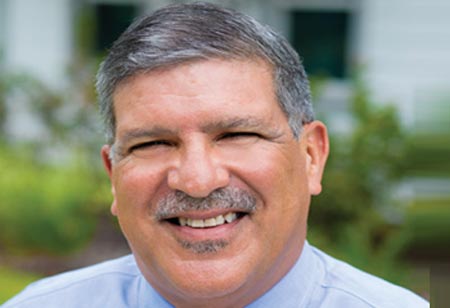Thank you for Subscribing to Healthcare Business Review Weekly Brief

Benefits of Partnering with Community Hospitals
Healthcare Business Review
Building partnerships with community hospitals is a business model utilized by tertiary and quaternary hospitals to create a referral base and grow service lines. I will share my personal experience and perspective with this business model as a physician leader at a children’s hospital.
I joined Nemours Children’s Health, Florida (NCH-FL) in 2012 prior to the opening of their new, free-standing children’s hospital in Orlando, Florida. I helped recruit many of the 80 physicians present on opening day, October 22, 2012. Being the third children’s hospital in the Orlando metro area, we had to invest a considerable amount of time and effort to build hospital patient volumes and a referral base.
Prior to opening day, our strategic planning and business development division met with community hospital leaders to build partnerships. We essentially offered our physicians and/or advanced practice providers to see patients at their local hospital to elevate the quality of newborn, neonatal, and/or pediatric inpatient care to keep as many infants and children as possible in their community hospital. Our first signed partnership was in 2013. Our inpatient average daily census (ADC) was 22 and our neonatal intensive care unit (NICU) ADC was 1.7 at that time.
Over the next ten years, we built nine more partnerships throughout Central Florida. In 2022, our inpatient ADC had grown to 74.7 and our NICU ADC had grown to 16.5. Although the average case mix index (CMI) for all the inpatients grew from 1.56 to 2.03 from 2014 to 2022, the average CMI for the patients referred from the partnership hospitals grew from 1.95 to 3.33 over the same timeframe. Not having an obstetrical service line in the children’s hospital, the NICU at NCH-FL relies entirely on transfers from community hospitals. In fact, 84 percent of neonates admitted to the NICU are referred from our community hospital partners.
As important as it has been to our growth as a new children’s hospital, it has also increased the patient volumes and acuity of the patients admitted at our community hospital partners. For example, patients requiring supportive care for respiratory infections are no longer being transferred to the children’s hospital when this level of care is provided locally. As experience is gained and pediatric resources are committed at the community hospital level, the number of children being transferred for neonatal and/or pediatric care appropriately decreases.
Both organizations in the partnership must be committed to investing what is required for the partnership to succeed. Ancillary personnel, equipment, supplies, and appropriately trained staff are just some of the essential investments needed at the community hospital.
The appropriate number and type of providers, MDs and APPs, for the specific clinical care model must be supported to ensure high-quality, safe pediatric care. Subspecialists at the tertiary/quaternary hospital must be willing to provide recommendations remotely 24/7/365.
Although most of the partnerships still exist today, a few of them have not lasted. One of the main reasons I believe these partnerships did not continue was a lack of a shared mission between organizations. For example, providing general pediatric inpatient care is not profitable and so these hospital beds are often used for other more profitable service lines in for-profit institutions.
These partnership clinicians face many challenges in providing neonatal and pediatric care in community hospitals. Ancillary services such as laboratory, pharmacy, and radiology are often adult-oriented and therefore, the equipment or processes are not pediatric-specific. Subspecialty support may not be readily available via telephone or telehealth, making the need to transfer patients to a higher level of care more likely.
"Building Successful Community Hospital Partnerships Takes Lots Of Time, Hard Work, Financial Investment, And Personal Commitment"
As one of the physician leaders of these partnership clinicians, it is my responsibility to grow and maintain engagement with these clinicians despite the geographic challenges. Regularly scheduled video conferences with the site leaders to discuss local challenges and share ideas for solutions are critical to maintaining engagement. Working as a clinician at the partnership sites provides firsthand experience to the leaders and creates professional camaraderie between the leaders and the partnership clinicians.
We know how important it is for clinicians working anywhere to feel valued for the work they do. It is also important for these clinicians to feel like they are a part of the local community they serve. We encourage our clinicians to live in these communities rather than commute so that they feel a bond with the community they serve. We encourage them to volunteer their time so that they can learn more about the needs of the community they serve.
Building successful community hospital partnerships takes lots of time, hard work, financial investment, and personal commitment. If done right, community partnerships create a win-win for both institutions. Keeping sick infants and children in their local community hospital by providing high-quality pediatric care is good for medicine and society as a whole.









